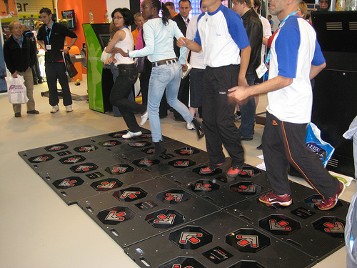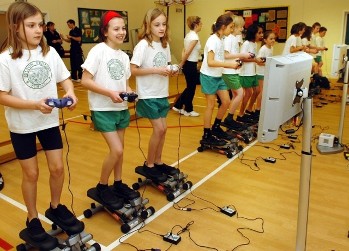ComputerWorks-n-Fitness
Childhood obesity has more than tripled in the past 30 years.
The percentage of children aged 6–11 years in the United States who were obese increased from 7% in 1980 to nearly 20% in 2008. Similarly, the percentage of adolescents aged 12–19 years who were obese increased from 5% to 18% over the same period.
In 2008, more than one third of children and adolescents were overweight or obese.
Overweight is defined as having excess body weight for a particular height from fat, muscle, bone, water, or a combination of these factors. Obesity is defined as having excess body fat.
Overweight and obesity are the result of “caloric imbalance”—too few calories expended for the amount of calories consumed—and are affected by various genetic, behavioral, and environmental factors.
Childhood obesity has both immediate and long-term effects on health and well-being.
Immediate health effects:
Obese youth are more likely to have risk factors for cardiovascular disease, such as high cholesterol or high blood pressure. In a population-based sample of 5- to 17-year-olds, 70% of obese youth had at least one risk factor for cardiovascular disease.
Obese adolescents are more likely to have pre-diabetes, a condition in which blood glucose levels indicate a high risk for development of diabetes.
Children and adolescents who are obese are at greater risk for bone and joint problems, sleep apnea, and social and psychological problems such as stigmatization and poor self-esteem.
Long-term health effects:
Children and adolescents who are obese are likely to be obese as adults and are therefore more at risk for adult health problems such as heart disease, type 2 diabetes, stroke, several types of cancer, and osteoarthritis.6One study showed that children who became obese as early as age 2 were more likely to be obese as adults.12
Overweight and obesity are associated with increased risk for many types of cancer, including cancer of the breast, colon, endometrium, esophagus, kidney, pancreas, gall bladder, thyroid, ovary, cervix, and prostate, as well as multiple myeloma and Hodgkin’s lymphoma.
Prevention:
Healthy lifestyle habits, including healthy eating and physical activity, can lower the risk of becoming obese and developing related diseases.
__________________________________________________________________
“ComputerWorks n Fitness” is a program design to address childhood obesity. Our children have access to cheap and very unhealthy food at every corner. Along with peer pressure and the lack of proper diet and nutrition education our kids are overweight and at risk of serious health problems.
Staffed with certified instructors, we plan to educate our youth on a more healthy diet using computers and the world wide web. There is so much information on nutrition, diet and living a more balanced and healthier life on the internet, the problem is that knowing where to seek this info, how to use the information and monitor the progress can be a bit overwhelming to most teens and preteens.
To make controlling and monitoring childhood diets, nutrition, health and exercise fun and exciting we plan on using variety of games, exercise routines and active video games play.
We plan on using special equipment and solutions from “Exergame Fitness” to make exercising fun and engaging. Exergame Fitness has a wide variety of active video game solutions such as: Dance and Step games, gaming bikes, wall active games, floor active games and climbing games.
Our mission is very clear here at ComputerWorks n Fitness:
To inspire physical activity through the most cutting-edge active game experience - AND nutrition- to provide fun, sustainable solutions to fight childhood obesity.




